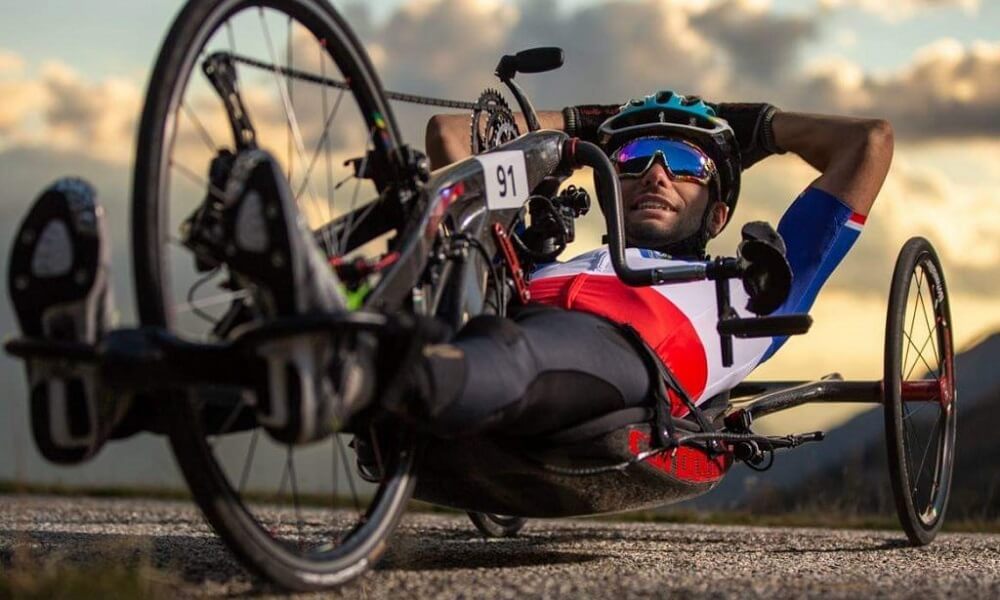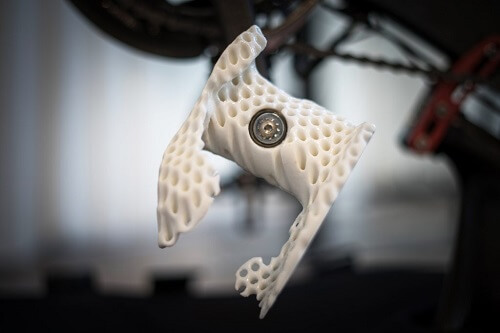3D printing to help Paralympic athletes!
Posted By Lucie Gaget on Apr 3, 2019 | 0 comments
3D printing and sports are making a great pair! Indeed, 3D printed equipment for sports can really be a great advantage for athletes. We saw it in previous blog posts, about sports safety equipments and winter sports.
But do you know that additive manufacturing can also benefit paralympic athletes? It could even be more interesting for them, allowing them to improve their sports experiences and allowing them to reveal all of their capacities by only focusing on their performance, and not on their equipment. Let’s see how to use 3D printing to help Paralympic athletes!
Why is 3D printing perfect to manufacture sports equipment?
Customization
If you know a little bit about 3D printing, you certainly know that one of the biggest advantages of this technology is customization! If you don’t know it, let us tell you more about this incredibly useful advantage.
While starting to use additive manufacturing, you will have to start to create a 3D model using a 3D modeling software adapted to your needs and to your sector. This 3D program will allow you to design the 3D part you want to print. The thing is, with these kinds of programs, you will have the opportunity to create the 3D model you want, which offers the possibility to make a custom made device.
3D printing is a perfect way to create custom made parts for any sector, and as we can see now, sports is not an exception. That is why this manufacturing technique is becoming quite interesting when it comes to “made-to-measure” sports equipment. This is especially true for Paralympic athletes, in need of some adapted equipment, helping them to forget about the disability and only focus on what they are doing!
This is also a reason why additive manufacturing is more and more used in the medical sector: It is a great way to create custom made devices, and prosthetics, totally adapted to the morphology and all the specificities of the patients!
Possibility to create low part volume
Another reason why 3D printing is a great solution for a project like this one, is that technology allows for creating low volumes of parts.
Traditional manufacturing techniques are usually made to create great volume of parts. While with digital manufacturing, you can produce small batches and access mass customization!
Why you should start thinking about 3D printing for your sports projects…
Are you looking for a manufacturing method for sports equipment? Have you ever considered 3D printing? The only thing we have to tell you is: You should.
By looking at our material catalog, you will find a 3D printing material that suits you. Do you need a rubber-like material? A slightly flexible plastic? Or something stronger, to create safety equipment? For example, Helmets have been developed using the CLIP (DLS) technology, by Riddell, a leader in football equipment manufacturing, to optimize the design and get lighter helmets.
Maybe 3D printing could also help you optimize equipment you are already producing. Give it a try and contact our 3D printing experts, they will find the best solution for your project! If you want to get an instant quote for your project, you can directly upload your 3D file on our online 3D printing service.
The story of a tetraplegic athlete & his 3D printed equipment
Here is a great example to demonstrate everything we just said! This is the story of a french paralympic athlete: Florian Jouanny.
Florian Jouanny is tetraplegic, and he is actually the first tetraplegic athlete to finish the Ironman Triathlon. But he still had a major problem, as he was still struggling to grip the handles of his handbike due to his paralysis. That is where 3D printing makes its magic.
Additive manufacturing allowed him, with the help of Athletics 3D, to design 3D printed custom bike handles. These bike handles are actually helping him by improving the rate of force generated by his hands into energy, driving the bike. This is optimizing the pedaling power of the athlete.
3D printing first has been used to develop both the prototype and the finished product. Customization allowed to create a whole adapted device.
Additive manufacturing is an efficient tool, offering many possibilities to create projects for sports. It allows providing the best equipment for all athletes, as this technology is making it possible to create devices adapted to anyone to help them be only focused on their performance.
What do you think of this 3D printing applications? Here at Sculpteo, we find it quite promising! Share your views with us in the comments.
Credit picture: Florian Jouanny. Photo via Laurent Salino/Zortrax.


 Connect with Google
Connect with Google Connect with Facebook
Connect with Facebook
